So I created an class diagram according to the assignment, is this the right way to do it ? I am especially not sure about the Column class because it seems to me that it can be just variable.
You are building application that will load data from several different advertising systems and then store the data into database, so it will be possible to analyze them.
You need to take in mind that every advertising system has different structure of report: Different named columns, different order of columns, different date formats Also data from ad systems are in different data formats(JSON,CSV,XML),
Reports from each system contains different amount of columns, our application is interested only in some of them: date, ad_campaing, ad_group, keyword, impressions, price (in every system they have different name)
Logic of advertising accounts is that one ad campaing contains multiple ad groups and one ad group contains multiple keywords.

